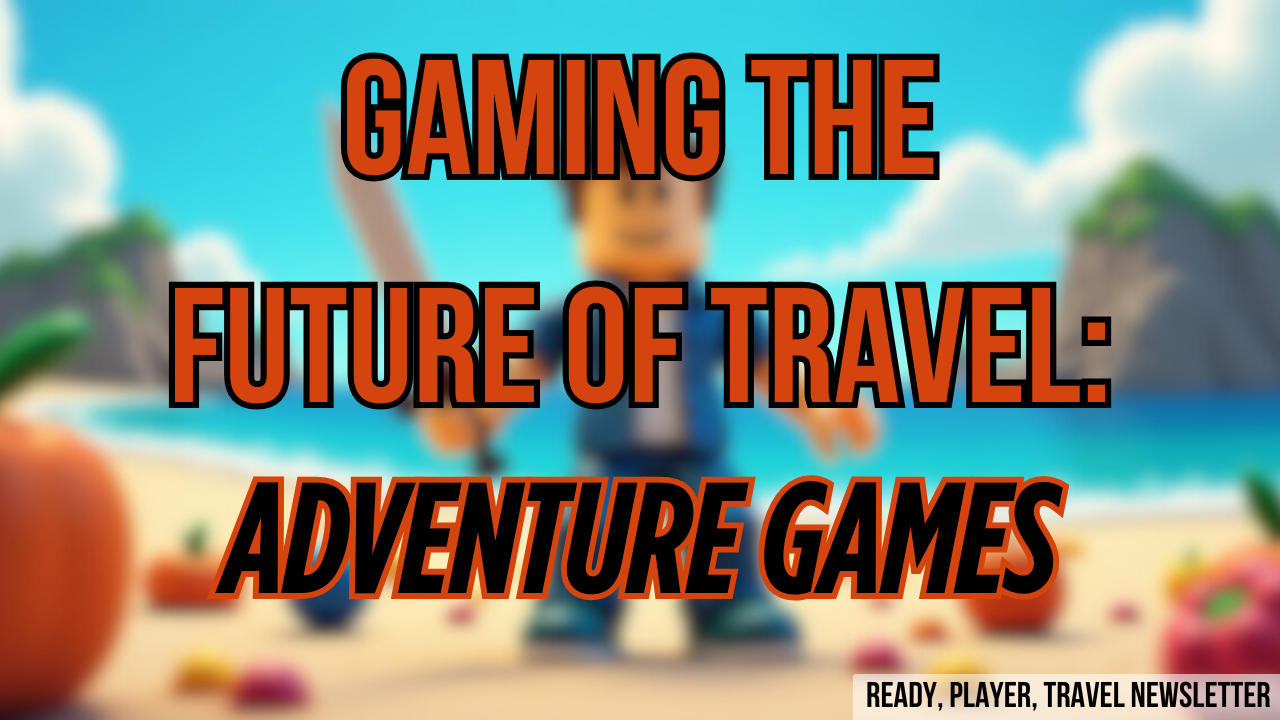Welcome to the fifth installment of Gaming the Future of Travel. This time, we dive into Adventure games—one of the most emotionally powerful and creatively flexible genres on Roblox.
Unlike Tycoons, Simulators, or Obbies, Adventure games are built around exploration, discovery, and narrative. They offer the perfect blueprint for tourism brands that want to engage Gen Z through immersive, mission-driven virtual experiences.
What Is an Adventure Game?
Adventure games focus on moving through worlds, solving quests, and uncovering stories. They reward curiosity, patience, and exploration.
✅ Explore hidden paths ✅ Complete quests and puzzles ✅ Unlock new areas and artifacts ✅ Follow storylines or legends ✅ Share discoveries socially
Adventure games are journeys, not races. They build emotional connections—and for tourism, emotional connection is everything.
Why Adventure Games Are a Natural Fit for Travel Marketing
- They mirror real-world exploration (cities, trails, ruins, islands)
- They tell deeper stories about culture, history, and environment
- They reward completionists—players love “checking off” discoveries
- They inspire curiosity about real places
A well-designed Adventure game doesn’t just show off a destination. It makes players feel like they’ve lived it.
Top Roblox Adventure Game Examples (And Lessons for Tourism)

1. Adventure Forward 2: Points of Conflict
📍 Developer: Explode1 An ambitious open-world exploration and puzzle-solving game that mixes parkour challenges, quests, and story progression.
✅ Best Practices:
- Layered quests encourage revisits
- Strong emotional storytelling
- Reward players with movement (new zones, abilities)
🎯 Tourism Angle: Ideal format for gamified city tours or cultural heritage trails—each quest could unlock a real-world monument, festival, or legend.

2. The Wild West
📍 Developer: Starboard Studios An open-world western-themed RPG where players can explore, mine, trade, hunt, and interact freely.
✅ Best Practices:
- Large, detailed map design
- Roleplaying elements blended into exploration
- Natural progression across terrain (mountains, rivers, towns)
🎯 Tourism Angle: Perfect model for national parks, historical destinations, or rural regional branding—turn landscapes into interactive stories.

3. Qatar Adventure (Adventure Elements)
📍 Developer: Inside the Creator Studio / Qatar Tourism A branded destination experience featuring quests across major cultural sites, sports stadiums, and desert landscapes.
✅ Best Practices:
- Real-world locations adapted into game environments
- Storylines tied to exploration
- Emphasis on movement and discovery
🎯 Tourism Angle: A blueprint for how countries, cities, and regions can gamify real-world attractions in a way that’s entertaining and educational.

4. Robloxian High School – Adventure Quests
📍 Developer: Cindering Originally a social hub game, but expanded with adventure-style mini-quests across a giant open-world map.
✅ Best Practices:
- Blend social spaces with adventure goals
- Modular questlines that can be expanded easily
- Incorporates seasonal or event-based updates
🎯 Tourism Angle: Useful for event-driven destinations—cultural festivals, city celebrations, and seasonal tourism events could all be recreated as adventure missions.

5. Can You Escape Adventure Obby (Adventure/Obstacle Hybrid)
📍 Developer: EscapeObbies Combines adventure storylines with obstacle course challenges through themed worlds—jungles, pyramids, castles.
✅ Best Practices:
- Environment-themed storytelling
- Progressive difficulty tied to exploration
- Light puzzle-solving keeps engagement high
🎯 Tourism Angle: Great model for attractions, museums, and natural sites—especially for destinations looking to reach younger travelers and families.

Best Practices for Building Adventure Games for Travel
✔️ Tie quests to real landmarks: Monuments, markets, museums ✔️ Use local legends and history: Create story-driven missions ✔️ Design for gradual exploration: Don’t reveal the whole map at once ✔️ Offer achievements and collectibles: Souvenirs tied to locations ✔️ Make it social: Encourage players to explore together
🎯 Tourism Use Cases for Adventure Games
- 🏛️ Historic cities and ruins: Create time-travel or treasure hunt quests
- 🏝️ Island nations and beach resorts: Layer storylines into hidden coves and ancient temples
- 🏞️ National parks: Explore trails, find wildlife, solve environmental missions
- 🏟️ Event-based tourism: Festivals, expos, celebrations built into adventures
📣 Want to Design a Travel Adventure Game?
Adventure games are the ultimate storytelling tool for tourism brands ready to make destinations unforgettable for a new generation.
📩 DM me for a free 1-hour consultation if you want to map out your destination’s first Adventure experience.
📌 And follow Destinate on LinkedIn to stay updated on how gaming is reshaping travel.
📚 Missed a Previous Edition?
- 🎡 Tycoon Games – Building a Tourism Empire
- 🧗 Obbies – Turning Destinations into Parkour Courses
- ✈️ Simulators – Training the Next Generation of Virtual Travelers
- 🎮 Series Kickoff – Core Gameplay Loops and Genres on Roblox
🔮 Next up: Roleplaying Games – Creating Social Tourism Experiences

